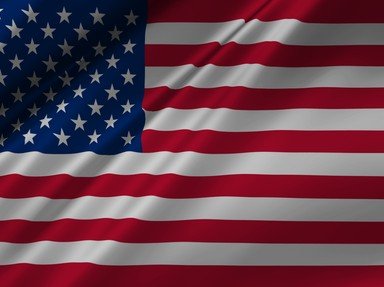Quiz Answer Key and Fun Facts
1. Jim Thorpe was born on May 28, 1888, in United States Indian Territory, later the state of Oklahoma. Though of mixed ancestry like most Americans, Thorpe was usually identified as an American- Indian and was a descendant of the well-known chief Black Hawk, leader of an insurrection in Illinois in the 1830s. To which nation did Black Hawk belong?
2. In 1907, after a limited prep school education at Haskell Indian School in Kansas, Thorpe matriculated at Carlisle Indian School in Pennsylvania. There he worked under the track and football coach who would be most often identified as his mentor. Who was this legendary leader of young men?
3. Thorpe first came to national attention in 1908 when he received an honorable mention on the most prestigious All-American team in college football at the team. Which hall-of-fame coach gave Thorpe this honor?
4. In 1909, Thorpe performed one of the most storied feats in the history of American track and field: in one dual meet, he entered every event and won six first place medals, securing a victory for Carlisle by himself. Against whose track team did Thorpe have this incredible day?
5. After the 1909 track season, Thorpe took a two-year hiatus from Carlisle, returning in time for the 1911 football season, which saw him win All-American honors as a halfback. The following year, Thorpe enjoyed perhaps his greatest moment, winning two gold medals at the 1912 Olympics in Stockholm. One of these medals was for the decathlon, a collection of ten track and field events that, in its Olympic context, is said to determine "the world's greatest athlete". In what other event did Thorpe win Olympic gold?
6. Thorpe returned to Carlisle for the 1912 football season, repeating as All-American halfback while scoring 25 touchdowns and 198 total points in an eight-game schedule. Among his storied feats that year was a memorable sequence of kick returns in the Carlisle-Army game: Thorpe ran back a 90-yard kick for a touchdown, only to have it called back on a penalty. He then proceded to run back the 95-yard rekick for another touchdown, which counted. His counterpart on the Army team, unfortunately, was not so lucky. What Army halfback (and future five-star general) left the game with a knee injury that eventually ended his athletic career?
7. Following the 1912 football season, Thorpe was involved in a scandal which eventually led to his Olympic medals being revoked. What was the nature of this disgrace?
8. After ignominiously losing his prized medals, Thorpe went on to have a lackluster career in professional baseball, playing in both the major and minor leagues from 1913 to 1919. For which of these major league teams did Thorpe not play during this period?
9. Though he had played loosely-organized professional football in the baseball offseason since 1915, Thorpe and several other players and football enthusiasts took the pro game to a new level in 1920, founding the American Professional Football Association, which would later become the National Football League. Who was the president of this seminal organization?
10. Jim Thorpe died in 1953 after a post-sports career that included marginal work in Hollywood films and World War II service in the Merchant Marine. In 1982, following an extensive inquiry, Thorpe's Olympic medals were posthumously reinstated.
Source: Author
stuthehistoryguy
This quiz was reviewed by FunTrivia editor
Nightmare before going online.
Any errors found in FunTrivia content are routinely corrected through our feedback system.
